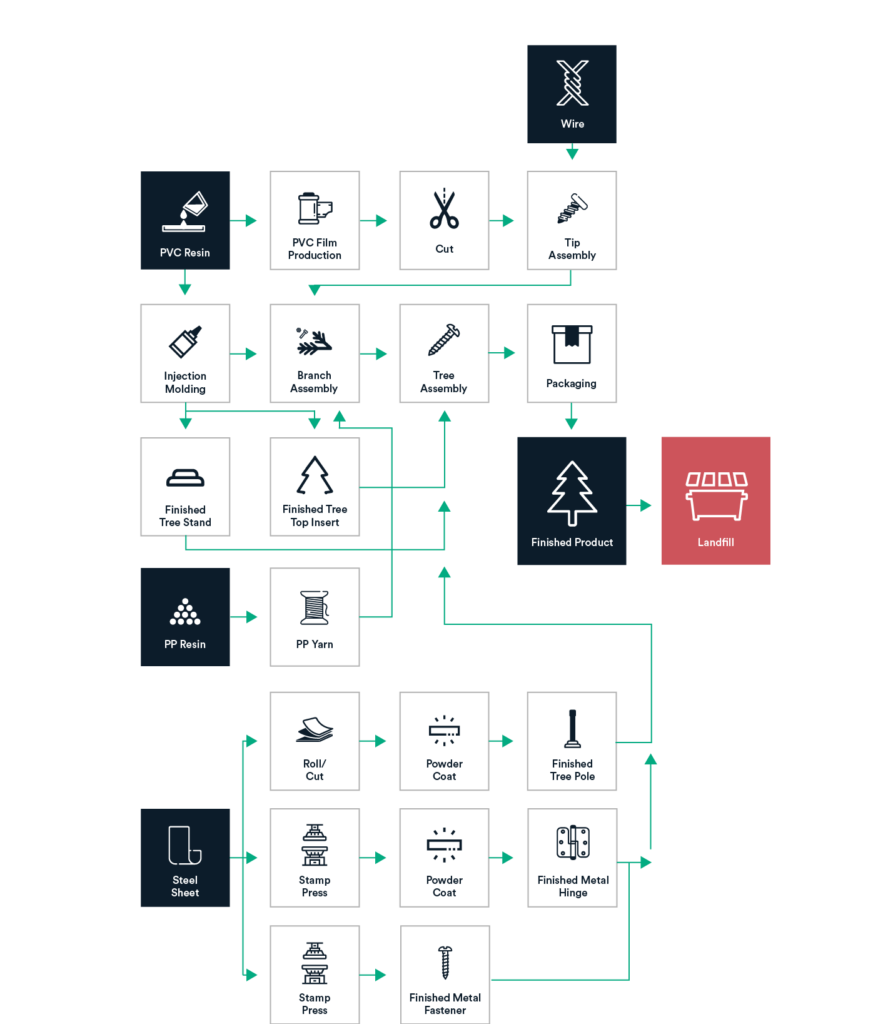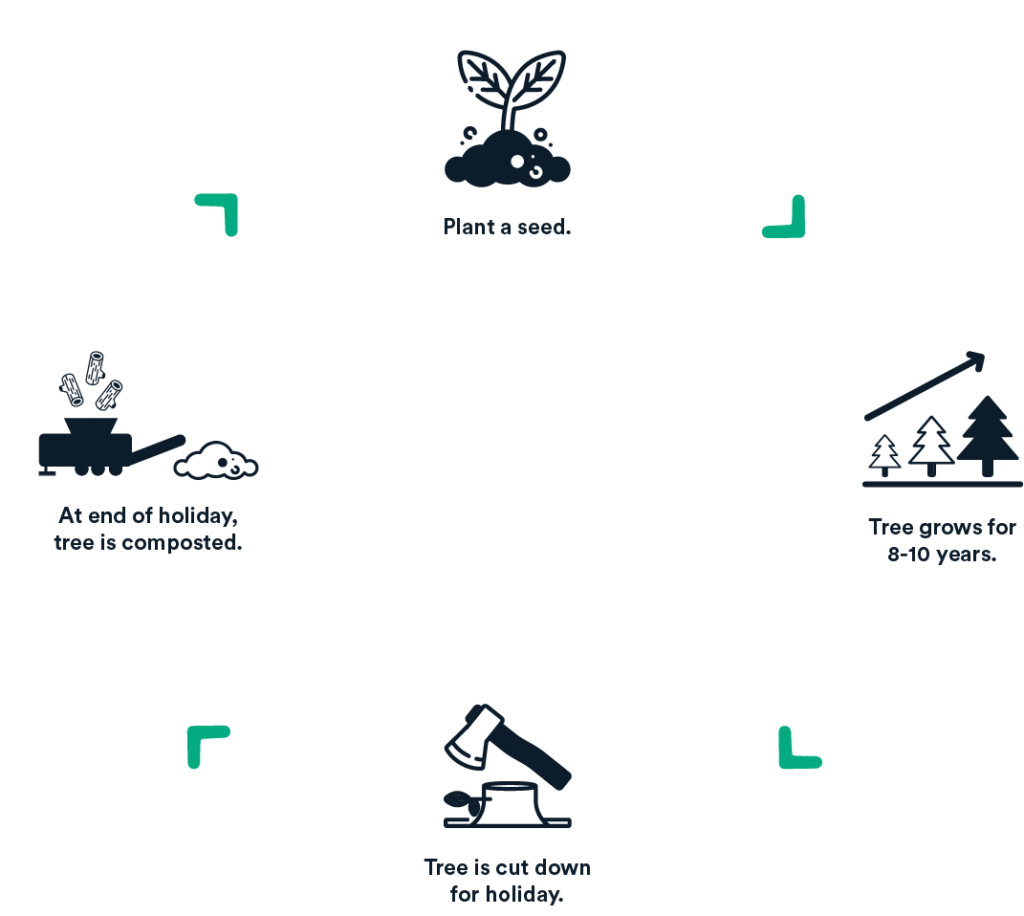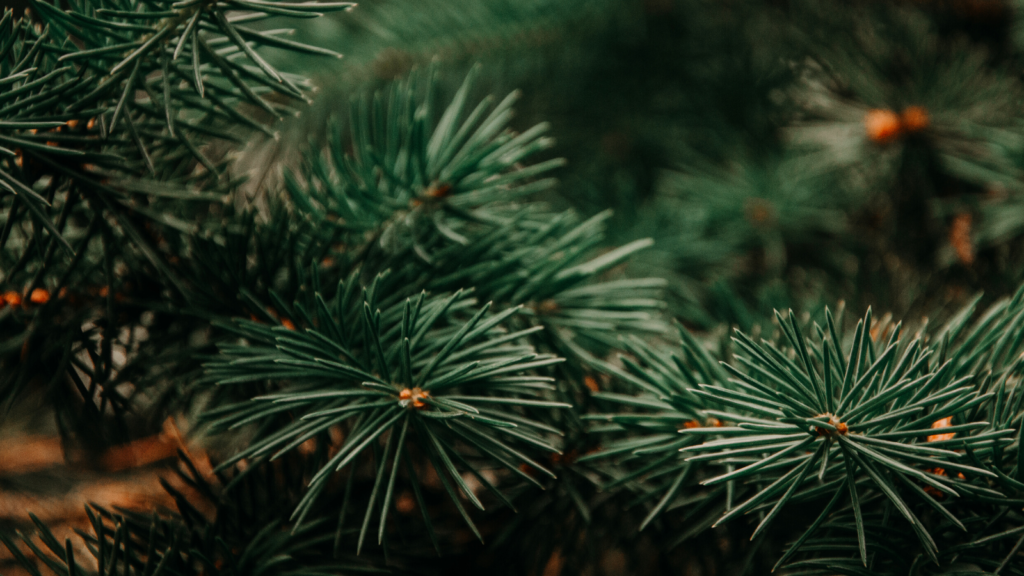According to the American Christmas Tree Association, 80% of trees displayed in the Christmas season are artificial. Artificial trees are generally preferred because they don’t need watering, don’t leave a mess, and don’t have to be picked out and transported home. Evidence has showed that although artificial Christmas trees can be reused, a regular Christmas tree is more environmentally friendly. Let’s dive into the details.
The life of an artificial Christmas tree

Production
Artificial Christmas trees are primarily made from steel sheets, polyvinyl chloride (PVC), a non-recyclable, biodegradable, petroleum-derived plastic, and polypropylene (PP). PVC is a known carcinogen and can be harmful to humans. These raw materials go through the processing and production steps that result in an artificial tree and tree stand. First, the PVC film produced from the PVC resin undergoes cutting and is combined with a steel wire to form the branches. Next, PP yarn produced from PP resin is then attached to the tip of the branches to complete branch assembly. The steel sheets undergo a rolling and cutting process to form the tree pole and the treetop insert is made from PVC resin. The steel sheets are also stamp pressed and powder coated using epoxy resin to form metal hinges. The tree is then packaged in a cardboard box and sealed using plastic tape. Overall, during the manufacturing process of an artificial Christmas tree, resources, such as electricity, thermal energy, gas, and water, are all used.
Environmental justice concerns
Most artificial trees are produced abroad in China, Taiwan, and South Korea where they have less strict environmental regulations, poorer working conditions, and lower wages.
Transportation
Therefore, they must be transported to the country where the artificial trees are being sold. This transportation, of course, has associated environmental impacts as well as air pollution, carbon emissions, etc. These trees are then bought and transported to the home of the consumer, adding to those impacts.
Use
Families use Christmas trees for the holiday season. Evidence shows that, on average, these artificial Christmas trees are used for 5-7 years, however, in order to minimize the impact of the artificial tree on the environment, one must reuse their artificial Christmas tree for 10-20 years, as well as look for one that was made in the country where the artificial tree will be used.
End of life
While the cardboard that the artificial trees come in can be recycled, artificial trees are non-recyclable and nonbiodegradable which means they will sit in the landfill after they are disposed of. At this point in time, although the artificial Christmas trees may be reused, they are a linear economy product as their end of life ultimately is in the landfill.
The life of a real Christmas tree

Production
Real Christmas trees are grown from a seed that is planted. For every tree cut down, Christmas tree farmers plant 1-3 new seedlings each year. As the trees mature, they absorb carbon dioxide and harmful gases from the air and release oxygen. It takes about 6 to 10 years for the seedlings to grow into a typical Christmas tree. In most cases, throughout the years, there are repeated use of pesticides and herbicides. Once the trees grow to the ideal height, they are harvested, baled, and transported to the location where they are sold or to the consumer’s home. For real Christmas trees, cultivation (planting, fertilizing, watering, etc.) is the largest contributor to environmental impacts.
Use
Families use the Christmas tree for the season and water them to keep them alive.
End of life
Christmas trees are biodegradable and compostable. Therefore, it is important to properly dispose of the Christmas tree through Christmas tree collection and composting programs. Many counties around the United States have instituted curbside collection days specific to Christmas trees to aid in their proper disposal. The trees can then be reused for firewood, mulch, or be replanted if the roots are still intact.
Best practices towards a circular economy
According to the Elliposos, real trees have less of an environmental impact than artificial ones in terms of distribution, disposal, and average carbon emissions. Real Christmas trees can be a circular product if recycled properly, while there is no way for an artificial tree to be a circular product. According to the New York Times, “The greenest tree is the one that’s bought locally and recycled.” One could go even further to buy a real tree that has been organically farmed so there are no chemicals used in the process or buy a tree with the roots still attached so it could be replanted after the holiday season. Most importantly, make sure the tree is properly recycled. If an artificial tree must be purchased, purchase a tree that is made in the country, as well as try and use for 10-20 years if possible.
Learn more about sustainable practices your business can implement this holiday season, or talk to one of our sustainability professionals.

